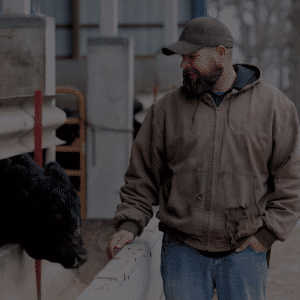
By:
Kathleen Lonergan Erickson
March 20th, 2019
Many U.S. food companies have pledged to move to sourcing eggs raised in cage-free houses by 2025. Consumer demand has influenced many companies including the likes of Wal-Mart, McDonalds, Burger King, Starbucks, Subway, etc., to make the commitment.

By:
Kathleen Lonergan Erickson
March 13th, 2019
Newborn calves are at specific risk for neo-natal bovine diarrhea complex, otherwise known as scours.

Receive insight and updates into protein production building solutions straight to your inbox.

Beef | Poultry | Posts | Swine | Dairy
By:
Kathleen Lonergan Erickson
March 6th, 2019
A lot of livestock producers we meet tell us they are ready to build. Some say they have been for a long time. They have talked with family. They have set goals. They have reviewed personal assets. They have considered succession. They see a future in growing their operation.

Beef | Poultry | Posts | Swine | Dairy
By:
Mary Auth
March 4th, 2019
Being equipped in a fire department in a fire protection district means two things: hardware and adequate training. Is your rural fire protection district or fire department firefighters properly trained to fight fires in special circumstances that include livestock?

Beef | Poultry | Posts | Swine | Dairy
By:
Mary Auth
February 20th, 2019
You can never plan too much into the design of a facility to house your livestock – and especially for fire prevention. Roughly two-thirds of fatal barn fires occur from October to March, according to an October 2018 report from the Animal Welfare Institute, with 36.8% occurring in January through March.

By:
Kathleen Lonergan Erickson
February 14th, 2019
Sometimes, producers get so focused on caring for their animals, they neglect their health, safety, or well-being. Even with the best intentions and layers of coveralls, jackets, gloves, etc., working with livestock is often unpredictable.

By:
Kathleen Lonergan Erickson
February 7th, 2019
Cold stress can have dire consequences when calves three weeks old or younger experience temperatures below 59℉. Too much or too little ventilation and inadequate supply and temperature of nutrition provided are factors that exacerbate cold stress, especially in young calves.

By:
Mary Auth
January 31st, 2019
A large amount of research has demonstrated quite convincingly that possessing high levels of self-efficacy acts to decrease people's potential for experiencing negative stress feelings by increasing their sense of being in control of the situations they encounter.